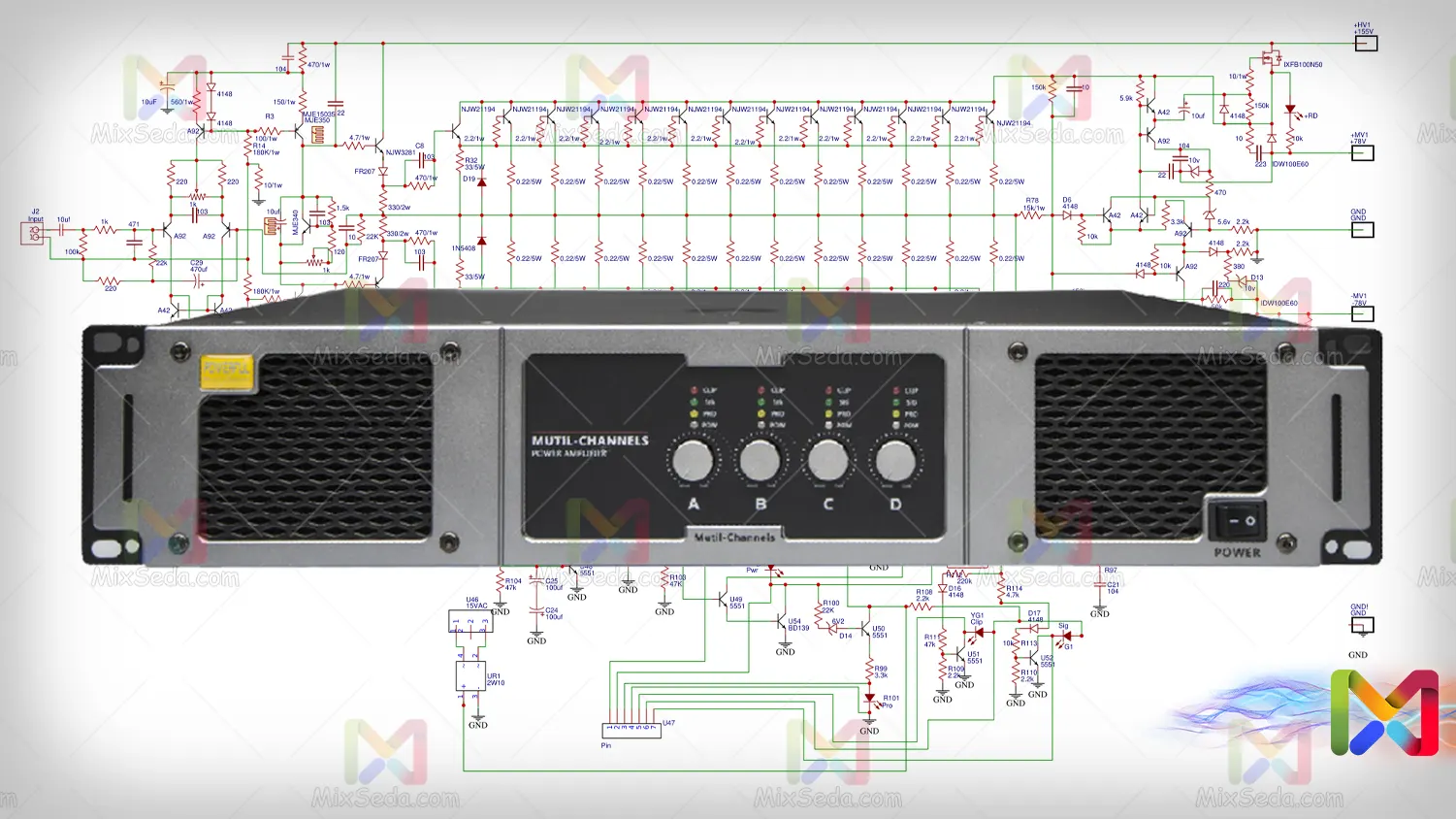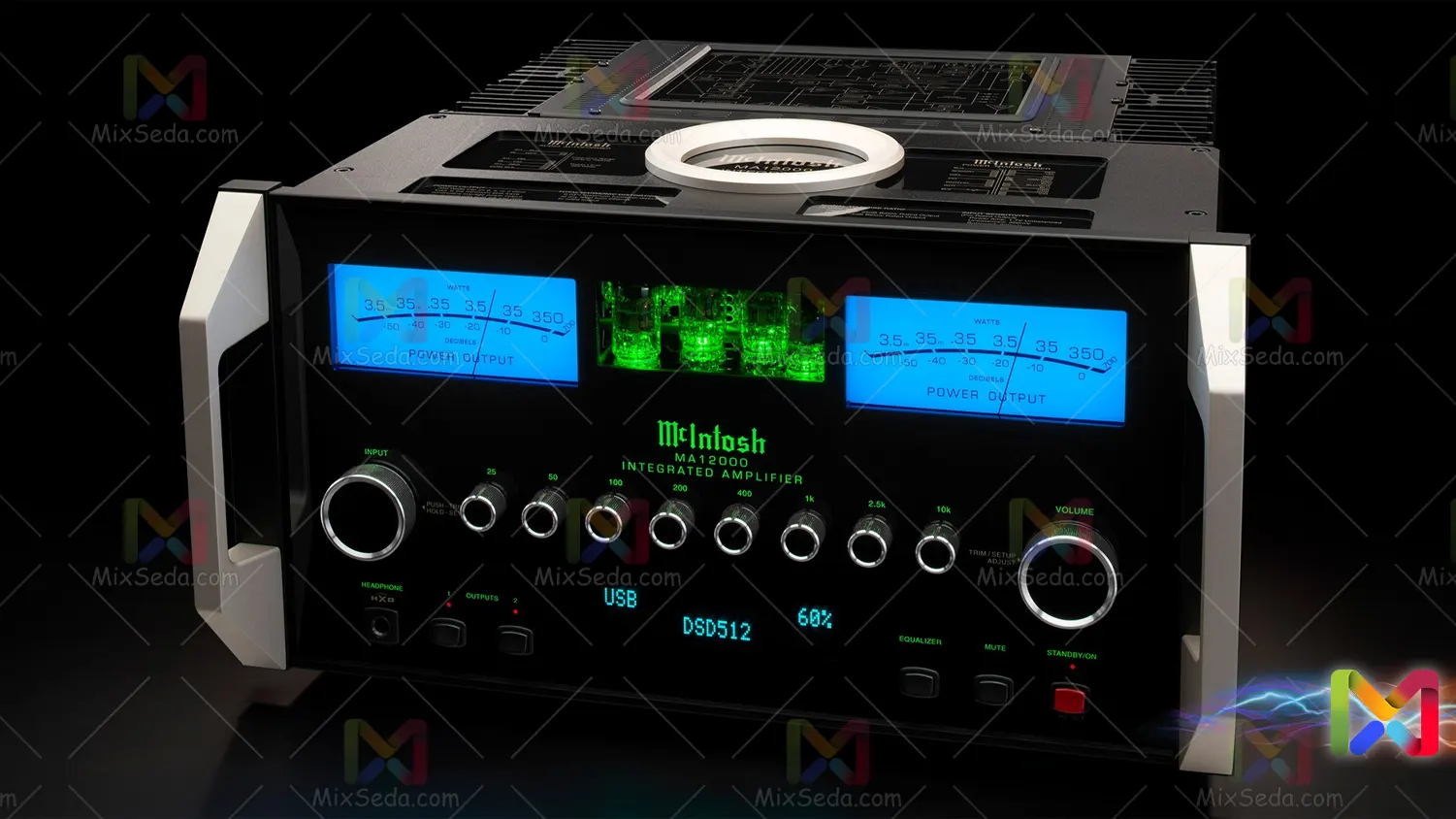
Class A amplifier
These amps are the best amps in terms of quality. Vacuum lamps also fall into this category. Lamps are sometimes worth millions for high quality WiFi systems.
But in the transistor type, these amplifiers are designed in such a way that their transistor is always on and at its specific operating point, and as soon as the signal enters, it amplifies it and gives it to the output.
Advantages and disadvantages of the class A amplifier
Benefit
The amplifier is of the highest quality, especially if we use good transistors. The frequency response of the amplifier is also nearly linear and is sensitive and amplifies frequencies that have a weak amplitude. So the best option for headphone amps and some monitor speakers are very high quality systems.
Disadvantages
First, a very low efficiency of 6 to 25 percent.For example, if you want a 30-watt amplifier, you need to use at least 100-watt transformers in the circuit. This is justified for less powerful consumers such as headphones, preamps, because again in general we see that a lot of power is not consumed at all, but it is very expensive for large speakers.
Second, high heat and premature heating, so that it produces a lot of heat, and if this heat is especially for high power, it is more difficult to dissipate. As a result, both the transistor and the vacuum tube both become electronically more sensitive when heated and burn out quickly in the event of a small error (such as shorting the output).
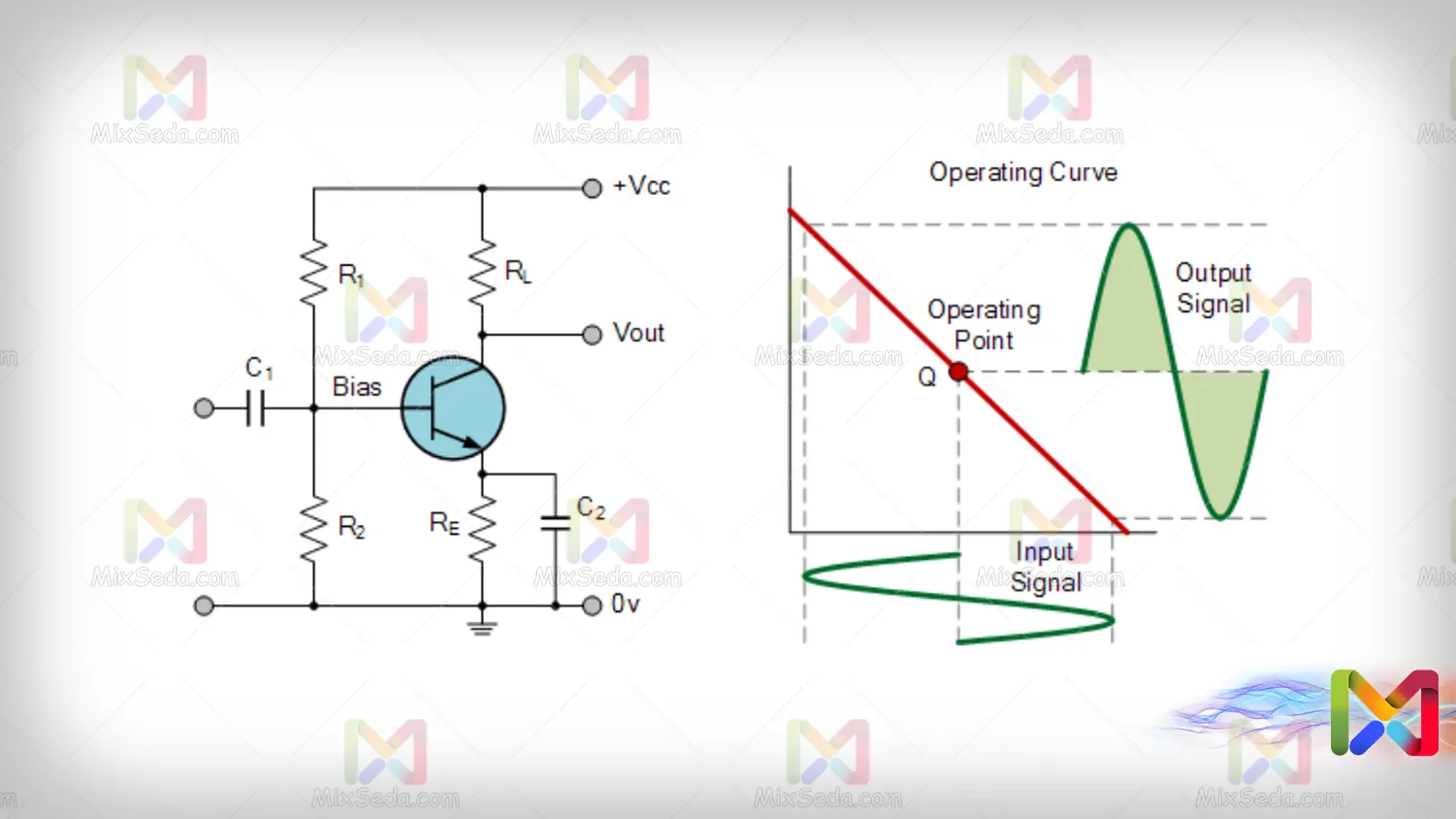
Class B amplifier
If we do not turn on the output transistor of the amplifier and let it turn off and on again after the signal arrives, then we have designed a class B amplifier.
But the problem is that the transistor cuts a certain amount of input voltage depending on whether it is a junction or a field effect, and whether it is an open junction of germanium or silicon, until it reaches the illumination threshold, so begins to amplify. This voltage is approximately 0.2 volts in germanium transistors and 0.7 volts in silicon transistors.
But since silicones are more common, silicones are commonly used. But the problem is that the voltage required to illuminate the waveform distorts our waveform and causes distortion of the sound and amplification of frequencies with lower amplitudes which are not desirable at all. So even though we were able to increase the efficiency by force to 50%, the class B amplifier for audio work remains only a definition and is not used at all.
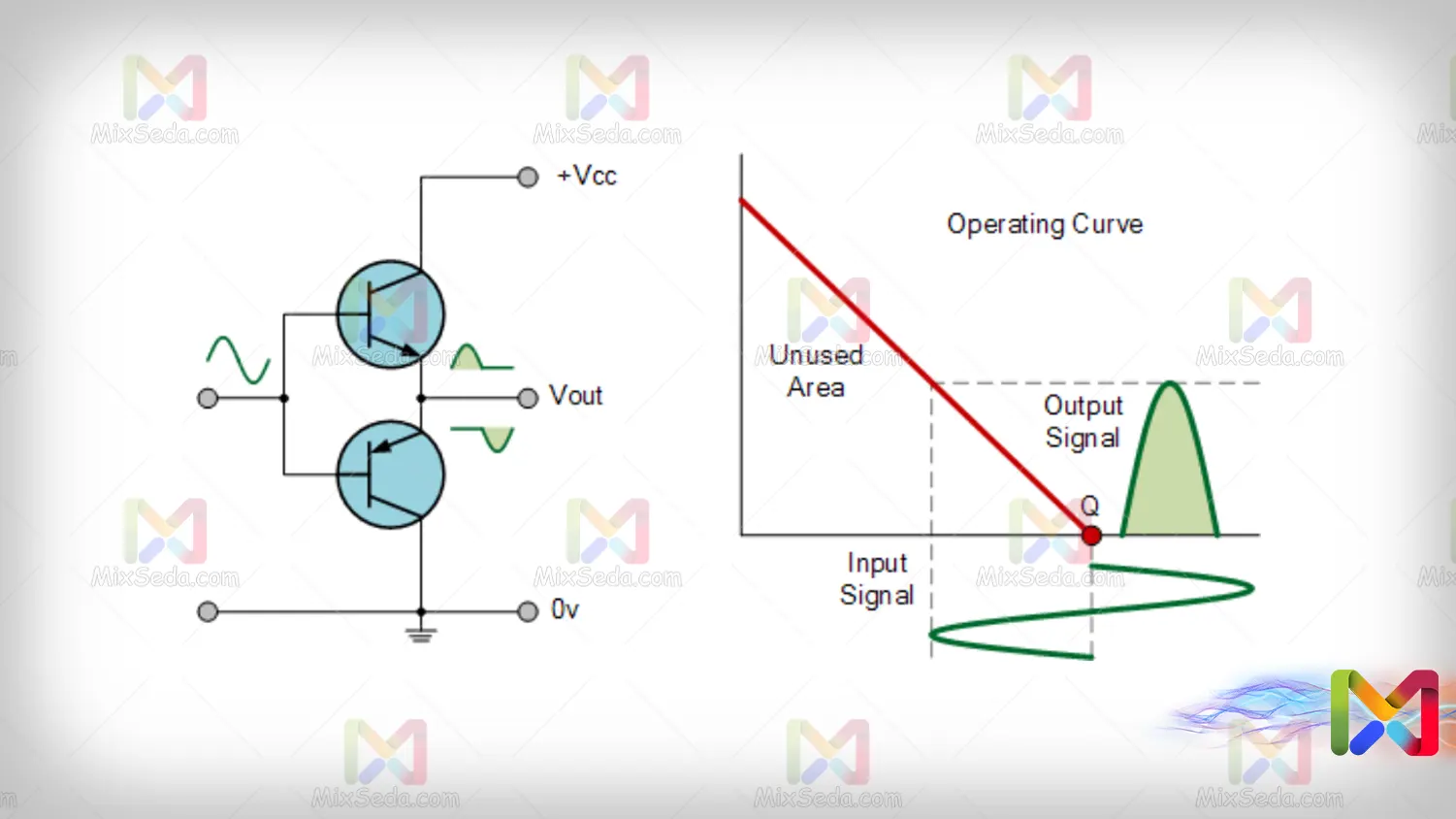
Class AB amplifier
If we come to make transistors not always on, which is not like class A losses and body heat, and not always off to cause distortion, then we have made a class AB amplifier.
So the transistors in this method are about to turn on, which cannot be said to be either off or on. This is the best working point for an amplifier to turn the amplifier on as soon as the signal arrives and start amplifying, but when there is no signal, turn it off and cause no loss.
So for this cob, we need to polarize the transistors with another voltage of 0.7 so that they are on the verge of firing. This is done in three ways:
- Resistor voltage distribution
- Two or more bursts in a row
- Transistor regulator
We consider the efficiency of these amplifiers to be around 65%. The advantage of the good quality of these amplifiers is a much higher efficiency than the Class A and its commercial application.
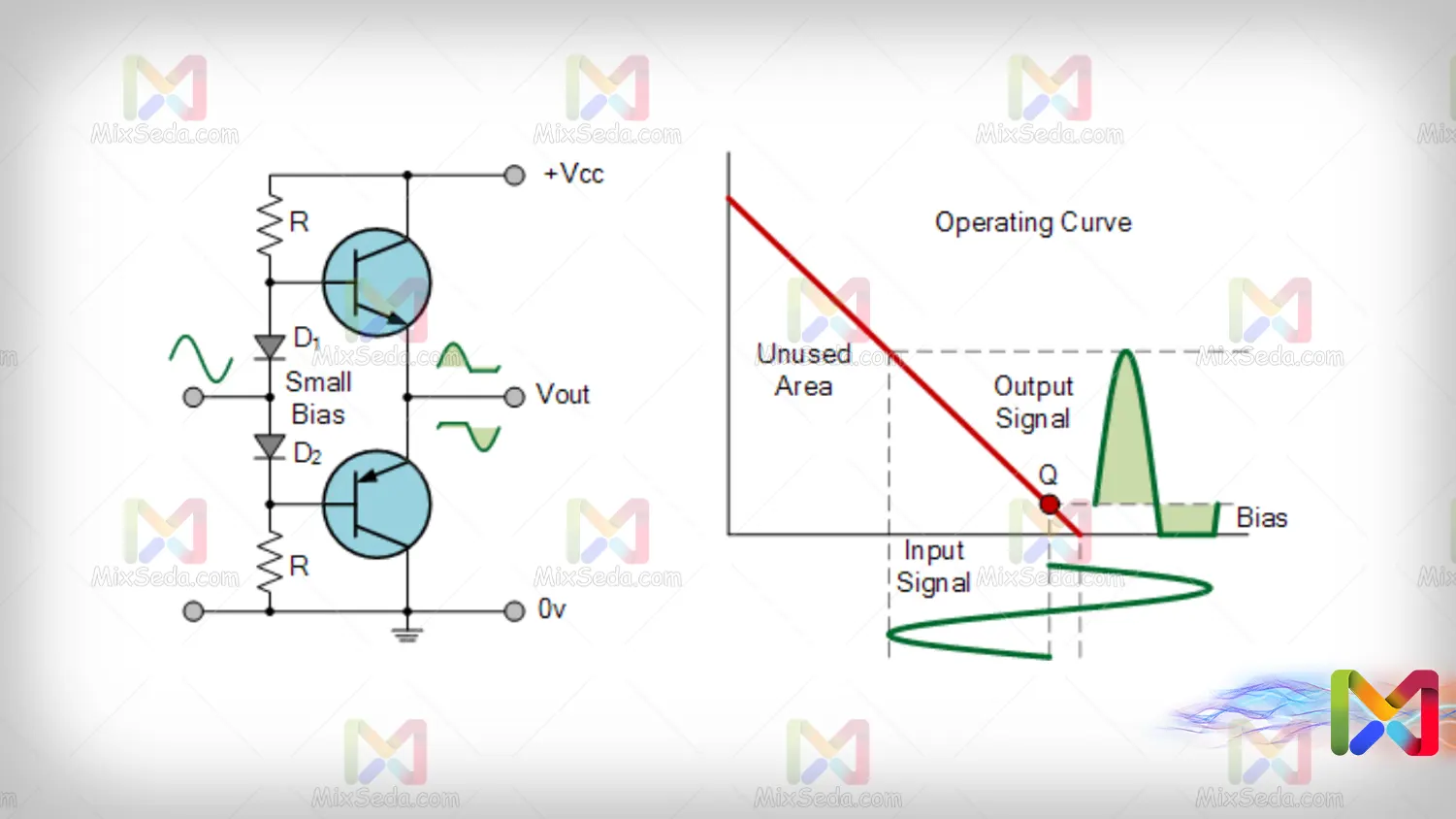
Class C amplifier
These amplifiers are generally designed for high efficiency but only amplify a small portion of the input signal. Which are suitable for telecommunication circuits but have no place in audio circuits. As they will damage the sound, they are almost like Class B amplifiers but on a larger scale.

Class D amplifier
MOSFET transistors didn't have much to say about analog signal amplifiers and amplifiers, but they were the best in switching circuits. The high switching speed of these transistors made them ideal for digital circuits and they had very high efficiency. What if these transistors fit well into high-loss industry and analog signal amplifiers?
Build a class D amplifier
To build a class D amplifier, we had to first convert the analog signal to digital in some way, then amp it up like a switch, and finally convert it back to an analog signal. So a class D amplifier is made up of three main parts:
PWM modulator; Which converts the analog signal to digital via the PWM method.
booster; That includes the power MOSFETs and their drivers.
demodulator; A device that converts a digital signal to analog.
The modulators first modulate the sound signal at a frequency from about 250 to about 600 by modulating the pulse width. These signals are then ready to be turned on and switched by the MOSFETs, and finally the signal is demodulated and returned to the analog by a low pass filter which includes inductor, capacitor and resistor. The advantage of class D amplifiers is their very high efficiency, between 90 and 95%, and they produce very little heat.
Class D amplifier quality
But at what price? Class D amplifiers are still in their infancy. They have a much lower quality than Class A amplifiers and are instead very suitable for subwoofers because they work very well at low frequencies and have considerable power and good quality (only at low frequencies). Their technology is still not good enough to say that they are at least better than the AB class. And they are by no means suitable for quality projects and are more useful for car subwoofers and finally PA subwoofers because they have high power.
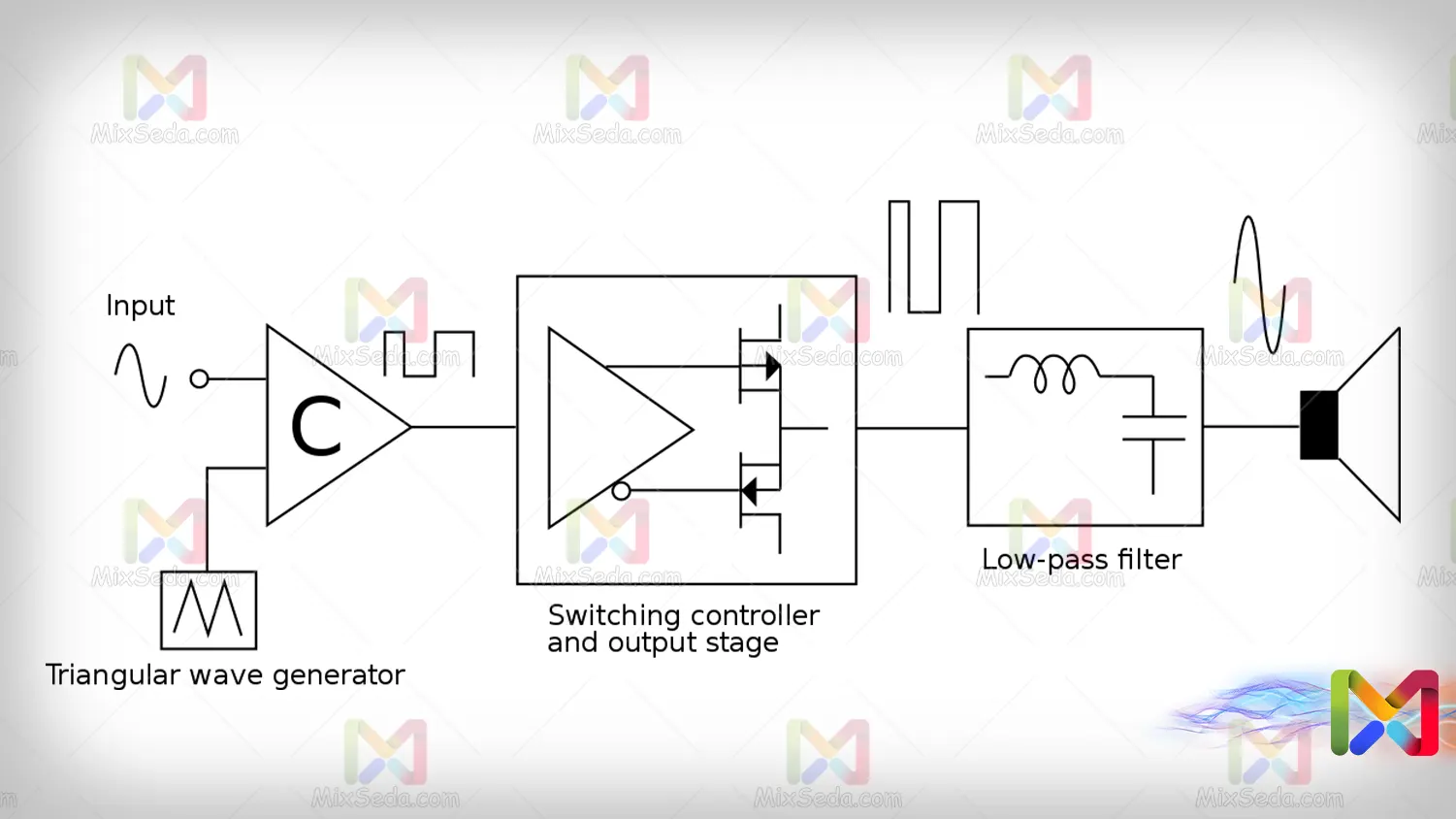
Class G amplifier
If we want to use class AB amplifiers for higher powers, we have to increase the efficiency again. So in class G amplifiers to use the high voltage such as 1400 volts in the power line which can support loudspeakers with high power and impedance, we divide the power supply voltage in half, which becomes 70 volts. We now use two levels of transistors, each connected 70 volts down or up. Voltage amplifiers can therefore be obtained with transistors that supply high current but do not have a good medium voltage.
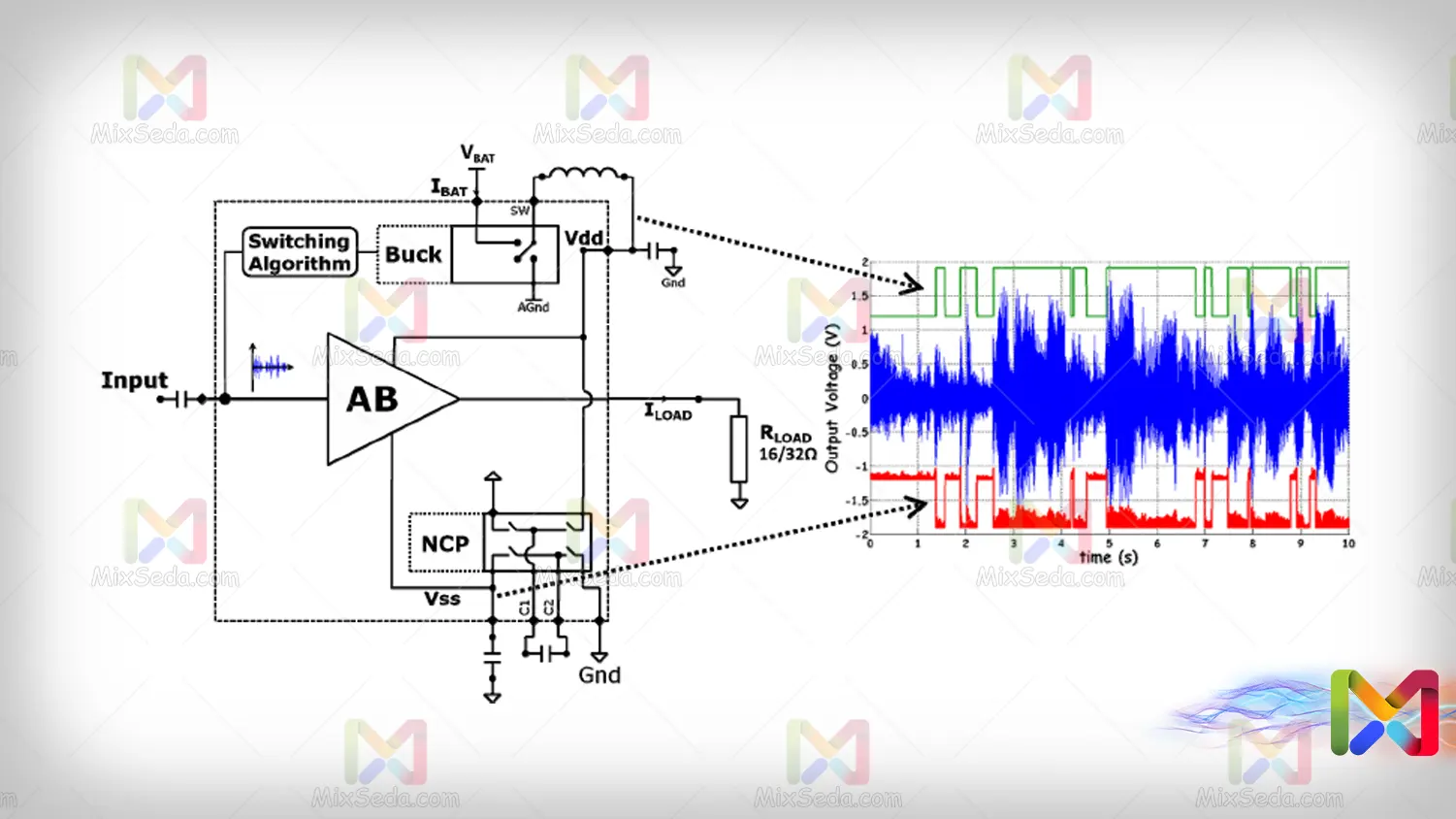
Class H amplifier
This class of amplifier is the same as class G except, for example, 135 volts, 5 volts on 1 transistor and another 130 volts on other transistors. This greatly increases the quality. It completely eliminated the distortion that was present in Class B, and this distortion was also slightly present in Class AB, and increased both the efficiency and power used to make amplifiers up to the effective power of 1500 watts.
